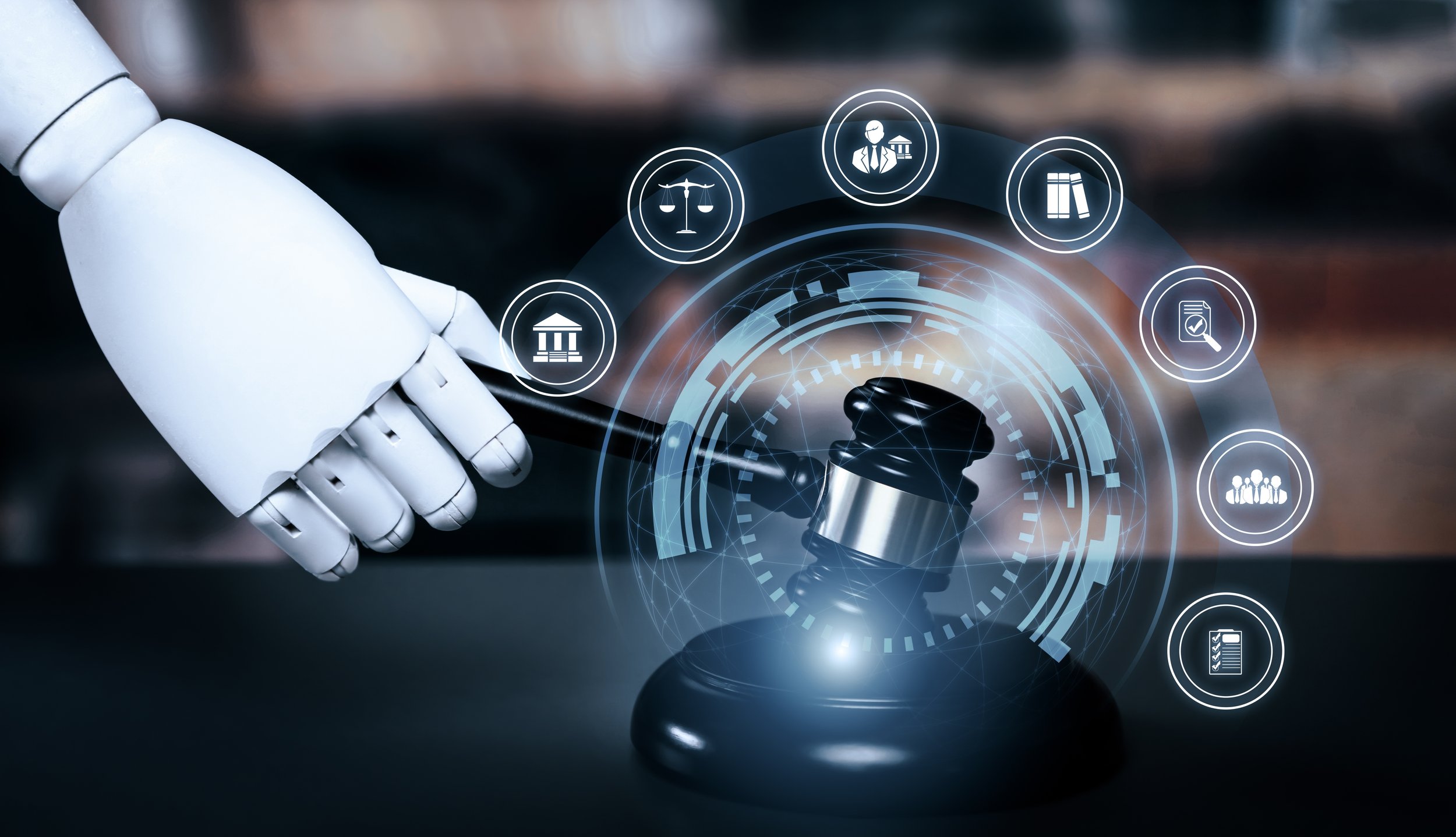How AI Regulation Is Evolving in the United States Artificial intelligence (AI) is no longer merely a whisper on the winds of innovation—it is a roaring tide, reshaping industries, economies, and lives. Across bustling cities and rural enclaves alike, AI’s influence is omnipresent, often subtle yet profoundly transformative. As this digital leviathan grows, so too does the imperative to govern it thoughtfully and robustly. The evolution of AI regulation in US is not just a legislative exercise; it is a societal necessity, a grand endeavor to ensure that technology remains humanity’s servant rather than its master.

The Early Days: A Light-Touch Approach
Initially, the ethos surrounding AI regulation in US mirrored the broader philosophy applied to tech innovation: laissez-faire, flexible, and growth-centric. Policymakers, perhaps enchanted by Silicon Valley’s meteoric successes, hesitated to impose constraints that might stifle creativity. This hands-off approach fostered an environment where start-ups flourished, but it also sowed seeds of future challenges—privacy breaches, algorithmic bias, and the unchecked proliferation of surveillance technologies.
The Wake-Up Call: Events that Spurred Regulatory Urgency
Several pivotal events have galvanized momentum toward more structured AI regulation in US:
- The Cambridge Analytica Scandal revealed the colossal power and vulnerability of data ecosystems.
- Facial Recognition Backlash spotlighted concerns about racial profiling and mass surveillance.
- Autonomous Vehicle Accidents underscored the life-or-death consequences of AI decision-making failures.
These incidents, far from isolated anomalies, served as thunderclaps, jolting policymakers, activists, and the public into action.
Current Landscape: The Mosaic of AI Regulation
The present state of AI regulation in US resembles a patchwork quilt—diverse, fragmented, and evolving at different velocities across various jurisdictions and sectors. Major developments include:
Federal Initiatives
At the national level, several pivotal efforts are shaping the conversation:
- The National AI Initiative Act of 2020 seeks to accelerate AI research and ensure global leadership while embedding ethical considerations.
- The Algorithmic Accountability Act proposes that companies must assess their AI systems for bias and discrimination.
- The AI Bill of Rights, introduced by the White House, outlines fundamental protections citizens should expect in an AI-driven world.
While promising, these initiatives often remain in embryonic stages, awaiting comprehensive legislative teeth.
State-Level Action
States like California, Illinois, and New York have embarked on their own quests to regulate AI:
- California’s CCPA indirectly influences AI by enforcing stricter data privacy norms.
- Illinois’ Biometric Information Privacy Act (BIPA) governs the collection and storage of biometric data, a cornerstone for many AI applications.
These local efforts, while commendable, contribute to a regulatory labyrinth that businesses must navigate with caution and dexterity.
Sector-Specific Guidelines
Different sectors are witnessing bespoke guidelines around AI regulation in US:
- Healthcare AI must comply with HIPAA and FDA regulations.
- Financial AI systems fall under the purview of the SEC and CFPB.
- Employment Algorithms are scrutinized under Equal Employment Opportunity laws.
This tailored approach acknowledges the unique risks AI poses in different contexts but also introduces complexity and occasional inconsistency.
Philosophical Foundations: Balancing Innovation and Safeguards
A critical tension underpins the evolution of AI regulation in US: how to foster innovation while safeguarding societal interests. Several guiding philosophies are emerging:
- Risk-Based Regulation: Prioritizing regulatory scrutiny proportional to the potential harm posed by an AI system.
- Rights-Based Regulation: Ensuring that AI does not infringe upon constitutional rights like privacy, free speech, and equal protection.
- Principle-Based Regulation: Setting high-level ethical principles rather than rigid rules to guide AI development flexibly.
Each model has merits and pitfalls, and the United States’ ultimate regulatory framework will likely incorporate elements of all three.
Key Areas of Focus for Future Regulation
Data Governance
Given that AI feasts on data, the governance of data—its collection, storage, use, and sharing—is central to AI regulation in US. Future policies must address issues like:
- Informed Consent: Ensuring individuals genuinely understand how their data is used.
- Data Minimization: Limiting data collection to only what is necessary.
- Data Portability: Allowing individuals to control and transfer their own data between platforms.
Algorithmic Transparency
The mystique of “black box” algorithms must be pierced. Regulations should demand that AI systems offer:
- Explainability: The ability to articulate, in human-understandable terms, how decisions are made.
- Auditability: The capability for external parties to examine and verify system behaviors.
Accountability Mechanisms
Responsibility must not vanish into the ether. Strong AI regulation in US will require:
- Liability Assignments: Clear identification of who is accountable when AI systems cause harm.
- Enforcement Provisions: Robust mechanisms to ensure compliance and penalize violations.
Bias and Fairness
Unchecked AI systems risk entrenching societal biases. Future regulations must mandate:
- Bias Audits: Regular testing and validation for discriminatory outcomes.
- Inclusive Design Practices: Development processes that proactively incorporate diverse perspectives.
Ethical Use of Autonomous Systems
From drones to autonomous cars, ensuring the safe and ethical deployment of AI-driven machines is paramount. Expect regulations around:
- Safety Standards: Mandating fail-safes and human override capabilities.
- Ethical Programming: Encoding moral decision-making frameworks where appropriate.
The Role of Public and Private Collaboration
Neither government mandates nor corporate self-regulation alone can adequately govern AI. Instead, the evolution of AI regulation in US demands:
- Public-Private Partnerships: Collaborative ventures that combine governmental oversight with industry expertise.
- Multi-Stakeholder Engagement: Including civil society organizations, academic researchers, and the general public in policymaking.
Such inclusive models foster policies that are pragmatic, balanced, and reflective of diverse interests.
International Influences and Harmonization Efforts
AI is borderless, but laws are not. Thus, AI regulation in US cannot exist in isolation. International dynamics influencing US approaches include:
- The European Union’s AI Act: A comprehensive regulatory blueprint that the US is closely monitoring.
- OECD Principles on AI: Non-binding yet influential ethical guidelines endorsed by the US and other nations.
- Bilateral Agreements: Cross-border collaborations aimed at aligning standards, particularly among democratic allies.
The interplay between domestic values and global trends will indelibly shape the future of AI regulation in US.
Challenges and Obstacles Ahead
While momentum is building, several formidable challenges loom:
- Regulatory Lag: Technology advances at a blistering pace, often outstripping the slower legislative process.
- Political Polarization: Partisan divides can stymie bipartisan consensus needed for effective regulation.
- Corporate Resistance: Tech giants may lobby vigorously against regulations perceived to hinder innovation or profits.
- Technical Complexity: Understanding the nuances of AI requires expertise that many policymakers currently lack.
Overcoming these challenges demands visionary leadership, public advocacy, and sustained commitment across multiple sectors.
The Promise of a Thoughtfully Regulated Future
Despite the obstacles, the promise of effective AI regulation in US shines brightly. It offers the opportunity to:
- Protect Individual Rights: Shield citizens from intrusive surveillance and unfair discrimination.
- Promote Ethical Innovation: Channel AI development toward human flourishing rather than unchecked profit.
- Enhance Global Leadership: Position the US as a moral and technological leader on the world stage.
The future of AI, and indeed the future of society, hinges on getting this regulatory endeavor right.
Conclusion: A New Chapter Unfolds
The story of AI regulation in US is still being written. It is a dynamic, high-stakes narrative filled with tension, triumph, and possibility. At its heart lies a profound question: Can a nation founded on liberty, equality, and innovation rise to the occasion and craft laws that honor these values in the digital age?
With courage, wisdom, and an unwavering commitment to the common good, the answer can be a resounding yes. The evolution of AI regulation in US is not merely a technical or legal challenge—it is a moral mandate, a test of collective will, and a clarion call to shape a future where technology amplifies the best of humanity rather than its worst.
The dawn of ethical AI governance is upon us. What remains is to meet it with vision, vigor, and an unbreakable spirit of optimism. The world is watching, and the future is waiting.




More Stories
Erectile Dysfunction: What’s the Right Treatment for You?
Uncover the Truth with This Week’s Healthy News
Fresh Healthy News to Inspire Your Wellness Journey